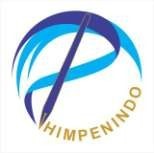Pengaruh Pemberian Biourin Sapi terhadap Pertumbuhan dan Produksi Tanaman Kangkung Darat (Ipomoea reptans Poir) pada Tanah Ultisol
Abstract
Ultisols have the potential to be developed as productive agricultural land, but need several efforts by means of organic matter and fertilizer applications. Biourine is a fermented liquid waste from cow urine. One of the commodities developed in Ultisol is spinach (Ipomoea reptans Poir). The study aims to determine the effect of treatments of six biourin concentrations on available nitrogen, soil pH, and growth plants of spinach on Ultisol soil. The single factor of completely randomized design (CRD) used as an experimental design consists of six treatments with four replications (24 experimental units). The results showed that biourine had no effect on increasing soil ammonium-N and had no effect on soil nitrate-N and soil pH. Biourin affects the increase in wet weight and dry weight of spinach plants. There is a relationship between soil NO3- and NH4+ levels with wet weight. Biourin concentration level of 2% is the best concentration to increase ammonium-N, wet weight and dry weight.
References
Abdissa, Y., Tekalign, T., Pant, L.M. 2011. Growth, bulb yield and quality of onion (Allium cepa L.) as influenced by nitrogen and phosphorus fertilization on Vertisol I. growth attributes, biomass production and bulb yield. African Jurnal of Agriculture Research 6(14), 3252-3258. 10.5897/AJAR10.1024
Aritonang, M., Setiyo, Y., Gunadnya, I. 2013. Optimalisasi proses fermentasi urin sapi menjadi biourin. Beta E-Journal 1(2), 1-11.
Daksina, B.F., Makalew, A.M., Langai, B.F. 2021. Evaluasi kesuburan tanah ultisol pada pertanaman karet di Kecamatan Cempaka Kota Banjarbaru, Provinsi Kalimantan Selatan. Agroekotek View 4(1), 60-71. doi.org/10.20527/agtview.v4i1.2990
Firmansyah, I., Sumarni, N. 2013. Pengaruh dosis pupuk N dan varietas terhadap pH tanah, N-total tanah, serapan N, dan hasil umbi bawang merah (Allium ascalonicum L.) pada tanah Entisols Brebes Jawa Tengah 23(4), 358-364. dx.doi.org/10.21082/jhort.v23n4.2013.p358-364
Foth, H.D. 1995. Fundamentals of Soil Scince, Terjemahan Purbayati. Gadjah Mada University Press, Yogyakarta.
Gardner, F.P, Pearce, R.B., Mitchel, R.L. 1991. Fisiologi Tanaman Budidaya. UI-Press, Jakarta
Havlin J.L., Beaton, J.D, Tisdale, S.L., Nelson, W.L. 2005. Soil Fertility and Fertilizers. An Introduction To Nutrient Management. Seventh Edition. Upper Saddle River, New Jersey: Pearson Education Inc.
Maekawa, T., Kokubun, M. 2005. Correlation of leaf nitrogen, chlorophyll and rubisco contents with photosynthesis in a supernodulating soybean genotype Sakukei 4. Plant Production Science 8, 419–426. doi.org/10.1626/pps.8.419
Mungara, E., Indradewa, D., Rogomulyo, R. 2013. Analysis of growth and rice yields (Oryza sativa L.) conventional, organic transitional, and organic farming system. Vegetalika 2(3), 1-12. doi.org/10.22146/veg.3993
Nuraini, Y., Asgianingrum, R.E. 2017. Peningkatan kualitas biourin sapi dengan penambahan pupuk hayati dan molase serta pengaruhnya terhadap pertumbuhan dan produktivitas pakchoy. Jurnal Hortikultura Indonesia 8(3), 183-191. doi.org/10.29244/jhi.8.3.183-191
Pangaribuan, D.W., Sarno, Kurniawan, M.C. 2017. Pengaruh pupuk cair urine sapi terhadap pertumbuhan dan produksi tanaman jagung manis (Zea mays L.). Jurnal Metamorfosa 4(2), 202-209 doi.org/10.24843/metamorfosa.2017.v04.i02.p11
Rahmi, A., Jumiati. 2007. Pengaruh konsentrasi dan waktu penyemprotan pupuk organik cair Super ACI terhadap pertumbuhan dan hasil jagung manis. Jurnal Agritrop 26(3), 105 – 109.
Tando, E. 2018. Review: Upaya efisiensi dan peningkatan ketersediaan nitrogen dalam tanah serta serapan nitrogen pada tanaman padi sawah (Oryza sativa L.). Buana Sains 18(2), 171-180. doi.org/10.33366/bs.v18i2.1190
Winarso, S. 2005. Dasar Kesehatan Dan Kualitas Tanah. Penerbit Gava Media, Yogyakarta.
Yusran, F.H. 2012. Tanah: Sumberdaya Utama Pertanian. Alika Pratama Offset, Jakarta.

















